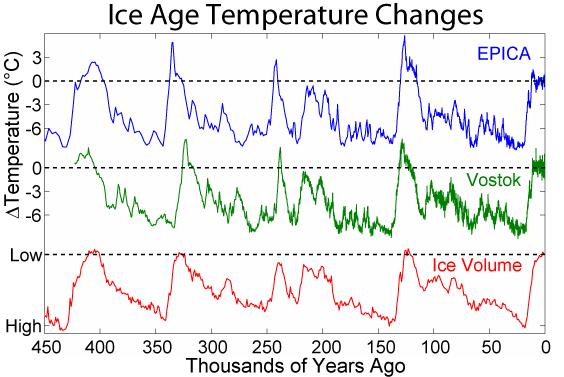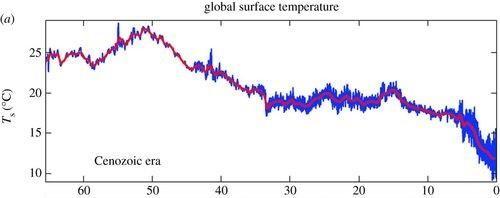
1 minute read
Where are temperatures changing and where are they not?
Bottom: Temperatures in the Arctic change in step with the AMO.
Greenhouse theory cannot explain the temperature constancy of Antarctica or the cyclical change in
the Arctic. The graphics are from Prof. Humlum's website http://www.climate4you.com
8. A journey into the past: Atlantic and ice ages
The Atlantic period 5000 to 7000 years ago was the warmest phase of the current interglacial, the
Holocene. The high temperatures led to increased evaporation over the oceans and therefore higher precipitation. The Sahara was green at that time and nomads drove herds of cattle across the grasslands, which they documented in rock paintings (https://en.wikipedia.org/wiki/Pastoral_period).
During the Atlantic, Iceland's ice sheet disappeared completely (https://tinyurl.com/veegls2).
So the "eternal ice" is just an ecoromantic fairy tale. Today, the largest glacier on Iceland alone - Vatnajökull - at 3000 cubic kilometers, is about 40 times larger than all the Alpine glaciers put together, but 5000 years ago it was practically non-existent. Earlier interglacials were much warmer than the present one, as the graph shows for the last 450,000 years. The present is at the right edge of the graph (https://tinyurl.com/y4r7wprm).
During the Eemian warm period 120,000 years ago, it was up to 5 °C warmer than today. At that time, hippos were native to the Upper Rhine (https://tinyurl.com/ydcsn597). This has nothing to do with greenhouse gases. First the temperature rose, then the CO2 (see chapter 15). The reason for the ice ages are changes in the tilt of the earth's axis and the eccentricity of the earth's orbit around the sun, which lead to periodic climate fluctuations. These are the Milanković cycles named after a Serbian engineer who was the first to calculate them.
9. Even further back in time: Cenozoic and Paleoarchaic
In the Cenozoic Era 65 million years ago, it was about 10 °C warmer than today, as this graph shows (from https://en.wikipedia.org/wiki/Paleocene; present is on the right, left is 65 million years ago).

An analysis of the air bubbles trapped in amber showed that the oxygen content of the atmosphere was about 32 % (http://www.ajsonline.org/content/318/5/590.abstract). This corresponds to an air










